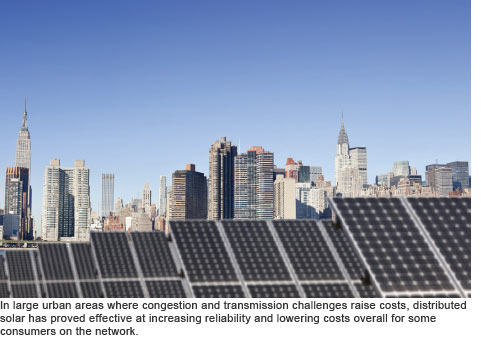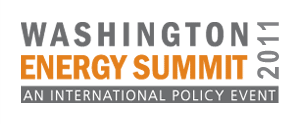By Zack Baize
  ugust proved to be an eventful month for the United States solar industry, with three notable manufacturing firms (Solyndra, Evergreen Solar, Spectra Watt) succumbing to unfavorable market conditions and filing for Chapter 11 bankruptcy. ugust proved to be an eventful month for the United States solar industry, with three notable manufacturing firms (Solyndra, Evergreen Solar, Spectra Watt) succumbing to unfavorable market conditions and filing for Chapter 11 bankruptcy.
While the dust has yet to settle in the wake of this industry shake-up, these bankruptcies have shed light on several challenges confronting US solar manufacturers moving forward. Namely, the industry’s current difficulty in navigating an increasingly competitive international market unbuttressed by federally insured loans and aggressive national policies to fuel demand.
But what does this mean for the solar industry as a whole?
“In the long-term, it’s basically a non-event for the industry,” says Carbon War Room CEO and Sun Edison Founder Jigar Shah. “The solar industry will continue to grow exponentially, not only in countries that have traditionally attracted solar investment, but also in developing economies.”
Shah says that while solar generation is still largely dependent on government support in America, it is costeffective in about 10 percent of the US market.
He says this is not the case in some developing regions of the world, where solar generation can make economic sense.
“Millions in developing countries lacking electricity infrastructure are currently paying more for private generation that they would for solar,” Shah says. “At this point, it’s a multitrillion dollar global market opportunity and growing.”
In addition to increasing cost-per-watt competitiveness, a big part of this opportunity lies in the versatility of solar generation. Solar installations can range in size from utility-scale to the smallest applications.
For example, in large urban areas where increasing congestion and transmission challenges raise costs, distributed solar has proved effective at increasing reliability and lowering costs overall for some consumers on the network.
In countries like India, where the lack of access to electricity is a major factor impeding development, distributed solar can often prove to be a cost-effective and reliable solution.
According to Shah, smallscale (< 5 MW) distributed solar generation will increasingly become a central component to urban power matrices around the world.
Given these major financial and developmental opportunities presented by the global solar market, the recent failures in the US solar industry seem to indicate that something was amiss in the companies and their products were simply not meeting market demand competitively.
The case of Solyndra has sparked considerable anger on the Hill where legislators are demanding to know what happened to $535 million in DOE loan guarantees, just two years after they were granted amid Obama Administration cheers for what was touted as a great example of stimulus spending creating ‘green’ jobs.
Jobs were created, but with the bankruptcy 1100 workers have now been laid off, making Solyndra a major embarrassment to the Administration.
As with many other manufacturing operations in the United States, Solyndra and the other failed solar companies found that they could not compete with Chinese manufacturers, who now are dominant in the global market for solar panels.
Beijing is more than willing to propel its solar industry to a leadership position through a range of incentives including grants, cheap loans and protective policies. Then there are the lower labor costs in China.
While the US government has supported the solar industry through programs like the DOE’s Sunshot Initiative and a handful of state governments have developed feed-in tariffs to spur consumption, the industry is clearly getting outsponsored by the Chinese.
The recent debt crises and subsequent austerity measures on both sides of the Atlantic have highlighted the dependency of high-cost solar products, such as Solyndra’s, on feed-in tariffs for demand in several key markets.
Recently, when three of the largest solar markets in Europe (Germany, Italy and France) began implementing cuts to “must buy” feed-in tariffs, manufacturers began to feel the pinch.
On the domestic front, Congress seems more and more likely to heavily scrutinize RE subsidies at the federal level while many state governments are reviewing their own feed-in tariffs in light of budget concerns.
However, not all is dark in the world of US solar manufacturing.
Advances in manufacturing processes and the declining cost of various inputs over the last year have significantly accelerated the ability of companies in this industry to turn out products that are competitive.
The two magic words in the realm of alternative power generation (using the sun, wind and other natural sources) are “grid parity,” which is when the cost for production from alternatives matches the cost of producing power from fossil fuels, whether coal, oil or gas.
Achieving grid parity really means offering a product at competitive rates in a free market. For companies that can’t meet this standard but depend on government support to stay in business, the Solyndra meltdown should serve as a warning that in future they will have to look to the market, and not the government, for viability.
Ironically, 2010 was a relatively good year for the US solar industry, with nearly $2 billion in export sales.
And while America produces just six percent of the global market for solar panels, against China’s 60 percent, American innovation in this industry, as in others, could be the way for US solar companies to gain overall market share.
The United States has developed a strong position in regards to raw inputs for solar cells, particularly polysilicon materials. Calisolar, a California- based solar company, recently announced plans to develop a $600 million new plant in Mississippi, adding to the US polysilica manufacturing base.
Additionally, better financing options that allow for large-scale manufacturing of the most cost-effective solar technologies could help to revive the recently struggling industry.
Moving forward, the US solar industry can succeed by synthesizing its technological advantages with a shifted focus towards lowest-possiblecost production.
According to Shah, “Those that focus on technology don’t understand this industry… it’s all about the cost-per-watt delivery of KWh.”
Note to Solyndra: At this point winners and losers in the solar industry are being defined on price and economies of scale, not proprietary cylindrical tubes.
If American solar companies and the agencies that underwrite them can internalize that, they will be better suited to compete in the race to win this global market.
Zack Baize is Ambassador at InvVEST.org, a non-profit organization focused on developing US renewable energy initiatives.
|


